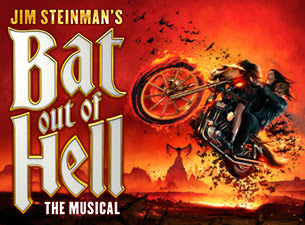The Good Girl Review
The Good Girl is a debut novel from Mary Kubica, and follows
the story of 25-year-old Mia Dennett. Mia is the outsider within her
upper-class and well-respected family, but one night, when she originally plans
to meet her boyfriend, she meets an enigmatic stranger, who is quick to turn
her life upside down forever. It is stated that this book is a
mystery-thriller, but I slightly disagree with this genre, for reason which I
will later state.
Firstly, the narrative structure of this novel. The story is
told through a first person structure from three separate characters, Eve (Mia’s
Mother), Gabe (The Detective) and Colin (The Kidnapper). The account changes with
each chapter, and I personally enjoyed this style as it allowed different
characters thoughts and feelings to be expressed. On top of this, the book does
also change between times, often alternating between before (Mia was found) and
after (Mia was found). Usually, a slow and basic reader like me would find this
complicated and unenjoyable; however, Kubica clearly identifies the positioning
in time at the start of each chapter, thus making it easy to understand.
My predominant fault for this novel would be the
stereotypical nature of the characters. Although this may make the book
somewhat easier, I feel as though it does ruin aspects of the characters
development. Colin is the stereotypical kidnapper, who is cruel and has a
complicated past. We also have Mia’s family, which consists of her father, a
top-end lawyer who cares only for his work, image and success, her mother, who
is weak, submissive and somewhat irritating, and her sister, who is also
destined to be a lawyer, thus making her the favourite of the family. These are
to name but a few of the stereotyped characters! With that said, however, character’s motives
are still explored and responses are realistic. In many first novels, authors
fail to make the characters respond in a way which works with the persona they
exhibit; however, I found that Kubica was successful in doing this.
Adding to this realism is definitely Mia. As a character, Mia
is very likeable and exhibits a very down-to-earth nature, something which I
feel as though is an essential factor for the books success. On top of this, I
liked the way in which Colin described her appearance throughout the novel.
Usually, many new writers make the kidnapping victims out to be stunning, even
after they had gone through the traumatic ordeal and probably haven’t been
looked after. Mia’s described appearance is more realistic, as Colin says on
multiple occasions how ‘rough’ she looks, and even comments on the fact her
legs are not shaved. I know the average reader probably won’t appreciate this
factor much, but I certainly did.
Lastly, the action within the story, although it is
interesting, is reasonably mundane. Usually, I enjoy novels with a large number
of twists that leave you not knowing what to expect when you turn over the page,
but with The Good Girl, the story did instead seem to just flow. I must admit,
I did enjoy the twist at the end of the book; however, many people who I have
discussed this with did predict the ending, thus making me uncertain on whether
it really is a shocking twist, or I’m just too thick to work it out (I know, it’s
probably the second one).
These sever lack of twists throughout the plot, alongside the
fact that we know Mia returns safely due to the narrative structure, is the
reason why I feel as though this book shouldn’t classify as a mystery thriller.
The number of enigmas are present to make it a potential mystery, but the lack
of suspense will be particularly disheartening for a thriller-loving audience
base who, quite frankly, will not have their expectations met.
With all that said, I would still say that this book is
worth reading, even if it isn’t the greatest book of the land. It is very
readable and enjoyable and even has short chapters, thus being ideal for anyone
who reads at night or for short amounts of time a day. It is interesting and
engaging, thus making it a strong debut novel, as well as a nice book to easily
read without the need to try to think about details too much.



Comments
Post a Comment